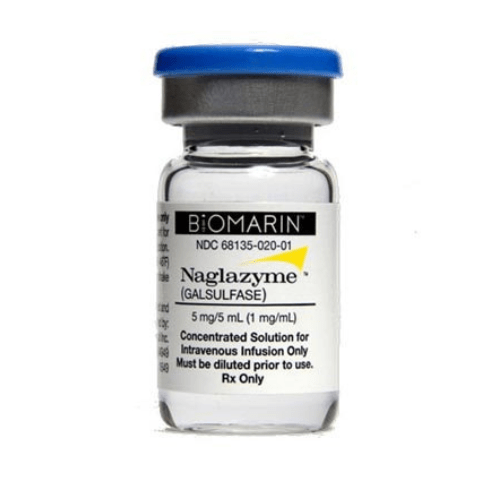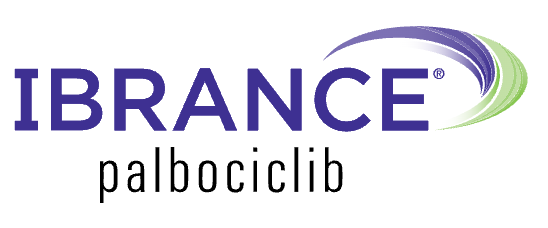
Naglazyme, also known by its generic name galsulfase, is a breakthrough medication approved by the U.S. Food and Drug Administration (FDA) for the treatment of mucopolysaccharidosis type VI (MPS VI), a rare and debilitating genetic disorder. In this detailed blog, we will explore the various aspects of Naglazyme, from its manufacturing details to its mechanism of action, indications, precautions, and more.
Manufacture Details:
On 31st May 2005 Naglazyme received FDA approval for treating mucopolysaccharidosis type VI (MPS VI). Naglazyme is manufactured by BioMarin Pharmaceutical Inc., a leading biopharmaceutical company dedicated to developing innovative therapies for rare diseases. The production of Naglazyme involves advanced biotechnological processes, including recombinant DNA technology. The active ingredient, galsulfase, is produced using a Chinese hamster ovary (CHO) cell line, and the final product undergoes rigorous quality control measures to ensure safety and efficacy.
Indication
Naglazyme Injection is a specialized hydrolytic enzyme designed for lysosomal glycosaminoglycan (GAG) degradation, specifically designed to address Mucopolysaccharidosis VI (MPS VI), commonly known as Maroteaux-Lamy syndrome. Clinical studies have demonstrated that Naglazyme has a positive impact on enhancing both walking and stair-climbing capabilities in affected individuals.
About Maroteaux-Lamy syndrome
Maroteaux-Lamy syndrome, also known as mucopolysaccharidosis type VI (MPS VI), is a rare genetic disorder characterized by the accumulation of glycosaminoglycans (GAGs) in various tissues throughout the body. GAGs are complex sugar molecules that play a structural role in connective tissues. In individuals with MPS VI, the enzyme arylsulfatase B (ARSB) is deficient or absent, leading to an inability to break down GAGs, particularly dermatan sulfate and chondroitin sulfate. As a result, GAGs accumulate in cells, causing progressive damage to multiple organs and tissues.
Symptoms: Maroteaux-Lamy syndrome can vary depending on the severity of the enzyme deficiency and the age of the patient. Common symptoms include:
- Skeletal abnormalities, such as shorter stature, joint stiffness, and bone deformities
- Respiratory problems, such as shortness of breath, recurrent infections, and sleep apnea
- Cardiac issues, such as heart valve thickening and enlargement of the heart
- Hearing loss
- Eye problems, such as corneal clouding and glaucoma
- Intellectual disabilities in some cases
Diagnosis: Maroteaux-Lamy syndrome is based on clinical presentation, family history, and enzyme testing. Enzyme testing can measure the activity of ARSB in cells obtained from a blood or skin biopsy. Genetic testing can also be used to identify mutations in the ARSB gene.
Mechanism of Action:
Naglazyme functions by substituting the lacking or impaired ASB enzyme in MPS VI patients. Given intravenously, it aids in breaking down accumulated GAGs, preventing additional tissue damage, and enhancing clinical outcomes. This enzyme replacement therapy targets the root cause of MPS VI, mitigating associated symptoms.
Dosage and Administration
The recommended dosage of Naglazyme injection is 1 mg/kg body weight administered once every week as an intravenous infusion over 4 hours. The initial infusion rate is adjusted to ensure the appropriate delivery of the solution over the specified duration.
Warning and Precaution
1. Severe allergic responses and anaphylaxis
- Critical anaphylactic reactions have been observed during Naglazyme infusions and up to 24 hours post-infusion.
- In case of anaphylaxis or intense allergic responses, promptly halt the infusion and initiate suitable interventions, including resuscitation, administration of epinephrine, and additional antihistamines, antipyretics, or corticosteroids.
2. Immune-mediated responses
- Vigilantly monitor patients undergoing Naglazyme treatment for potential development of immune complex-mediated reactions.
3. Risk of sudden cardiorespiratory failure
- Exercise caution when administering Naglazyme to patients susceptible to fluid volume overload.
- Consider a reduction in total infusion volume and rate in such patients.
- Ensure the availability of medical monitoring and supportive measures during the infusion.
4. Sudden respiratory complications
- Sleep apnea is prevalent in MPS VI patients.
- Antihistamine pretreatment may heighten the risk of apneic episodes during Naglazyme infusion.
- Adequate respiratory support should be maintained throughout the infusion.
5. Infusion responses
- Pre-infusion pretreatment with antihistamines, with or without antipyretics, is recommended to alleviate the risk of infusion-related reactions.
- In the occurrence of infusion reactions, consider actions such as reducing the infusion rate, temporarily discontinuing the infusion, or administering additional antihistamines and/or antipyretics.
These precautions are crucial for safely administering Naglazyme, and healthcare providers must stay vigilant for potential adverse reactions during the infusion process.
Usage in Specific Populations:
Pregnancy: The safety of Naglazyme during pregnancy has not been adequately studied. Healthcare providers should carefully weigh the potential benefits against the risks before recommending Naglazyme to pregnant individuals.
Lactation: It is not known whether Naglazyme is excreted in human milk. Due to the lack of data, a decision should be made whether to discontinue breastfeeding or to discontinue the drug, taking into account the importance of the drug to the mother.
Pediatric and Geriatric: The safety and efficacy of Naglazyme in children below the age of 5 years and in patients older than 65 years have not been established, and no dosage regimen can be recommended for these populations.
Kidney Impairment: No specific dosage adjustment is recommended for patients with renal impairment.
Liver Impairment: The safety and efficacy of Naglazyme in patients with liver condition have not been established. Caution is advised in this population, and individual patient characteristics should be considered.
Side Effects
- Common side effects of Naglazyme include fever, chills, rash, and headache.
- Infusion-related reactions, such as respiratory distress and chest pain, have been reported and should be closely monitored during administration.
- Serious allergic reactions are rare but can occur.
Storing Condition
Keep Naglazyme vials refrigerated within the temperature range of 2°C to 8°C (36°F to 46°F). Avoid freezing or shaking the medication, and ensure protection from light. Keep the medicine away from pets and children.
Patient Assistance and Cost Information
Naglazyme injection is available in the US and Europe. To obtain this medication, contact SANSFRO or experienced import firms. For current Naglazyme price in India, reach out to our Patient Support Team at (+91) 9315705373 or help@sansfro.com for accurate details.
Conclusion
Naglazyme (Galsulfase) represents a significant advancement in the treatment of MPS VI, offering patients a targeted therapy to address the underlying cause of the condition. Ongoing research continues to demonstrate the long-term benefits and safety of Naglazyme, providing hope for patients and families affected by MPS VI.
Reference



